N. Korea unveils first 'tactical nuclear attack submarine'
S. Korean military says submarine does not seem to be capable of normal operation
By Ji Da-gyumPublished : Sept. 8, 2023 - 15:20
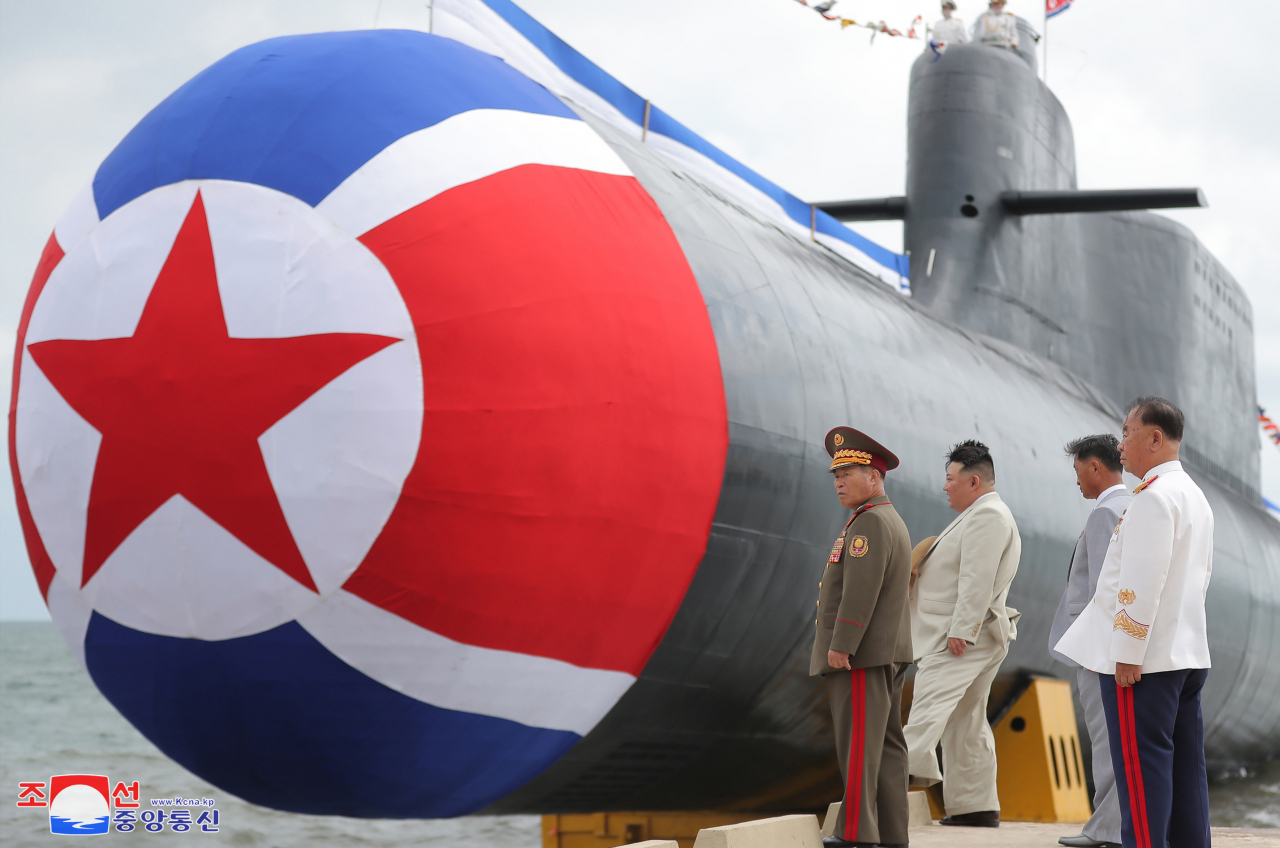
North Korea has unveiled its first-ever operational submarine, purportedly capable of launching nuclear-capable ballistic missiles, while the country's leader, Kim Jong-un, has urged for intensified efforts to expeditiously arm the Navy with nuclear weapons against the evolving nature of military actions by adversaries.
But South Korea's Joint Chiefs of Staff have dismissed the claim, assessing that the submarine does not seem to be capable of normal operation.
North Korea conducted a ceremony to launch a "tactical nuclear attack submarine No. 841" named Hero Kim Kun-ok on Wednesday, with the country's leader in attendance, state media belated report Friday, just one day before the 75th anniversary of the country's foundation.
The submarine was transferred to a submarine squadron within the North Korean Navy's East Sea Fleet, according to the order from the Central Military Commission of the ruling Workers’ Party of Korea. Kim also inspected the submarine, which is currently being prepared for a "test voyage" on Thursday.
"Comrade Kim Jong-un said that arming the Navy with nuclear weapons is an urgent imperative of our times, one that cannot be delayed or slowed down any further and represents a crucial demand in the development of revolutionary armed forces," North Korean state media said in a Korean-language dispatch.
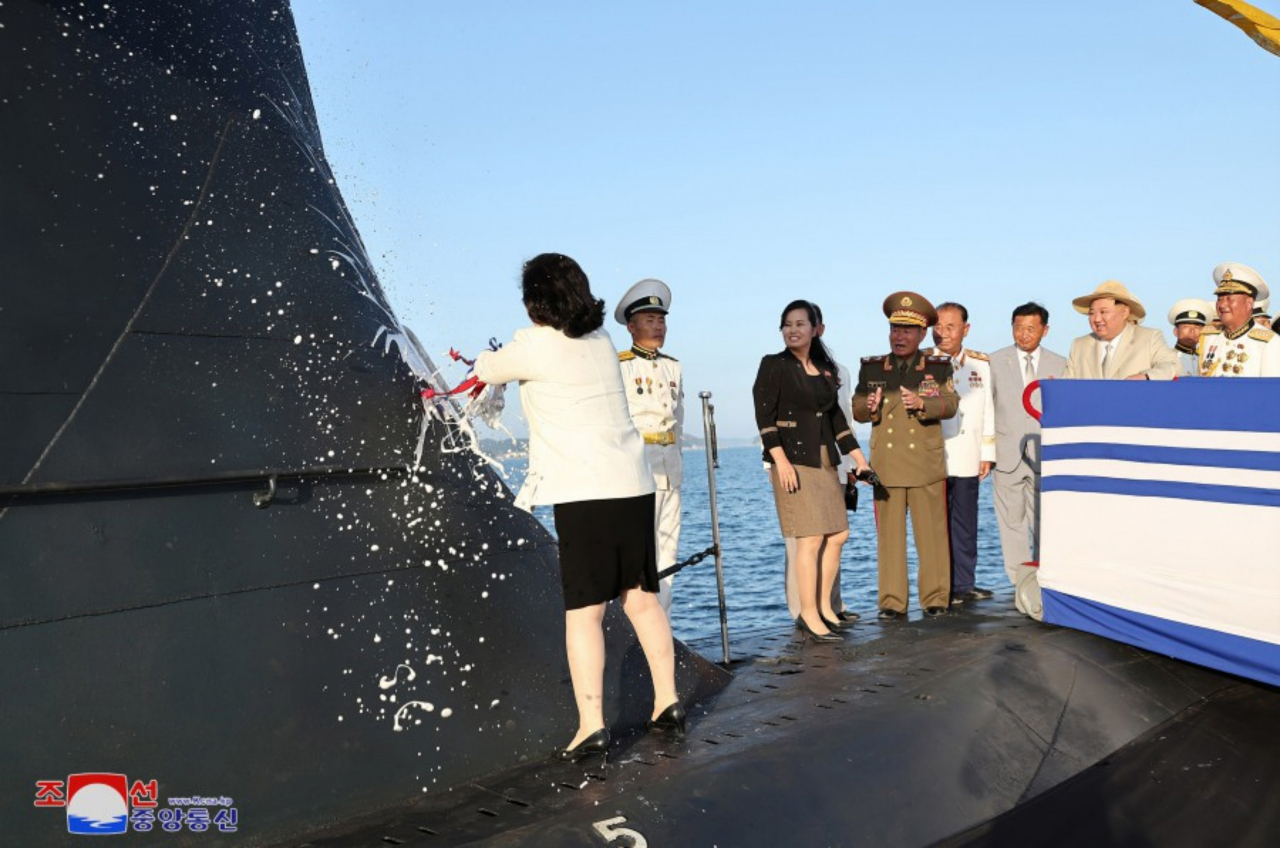
During his speech, Kim unveiled North Korea's plans to "convert all existing medium-sized submarines into attack submarines capable of launching tactical nuclear weapons." This initiative is a key component of the country's strategy to modernize its naval power at minimal cost, a vision first articulated at the 8th Party Congress in January 2021.
In this context, Kim explained that the No. 841 submarine serves as the "prototype for these tactical nuclear attack submarines," derived from the existing medium-sized fleet.
In his address, Kim emphasized that the "submarine, designed to align with the Navy’s strategy, national defense plans and military strategic demands of war plans, has solidified its position as a formidable asset." Kim claimed that the submarine has the "capability to execute preemptive and retaliatory strikes against hostile countries from any underwater location, while carrying a substantial arsenal of nuclear delivery vehicles, each with varying yields."
Kim also urged the "acceleration of the construction of nuclear-powered submarines," which he directed to be included in the five-year defense development plan announced in January 2021.
Notably, Foreign Minister Choe Son-hui assumed the role of sponsor for the submarine, a position traditionally reserved for individuals, often representative women, who ceremoniously christen or launch the vessel by breaking a bottle of champagne against the hull just before its inaugural voyage.
North Korea's decision to select Choe for this role is widely interpreted as an unmistakable warning message directed toward the US and its allies.
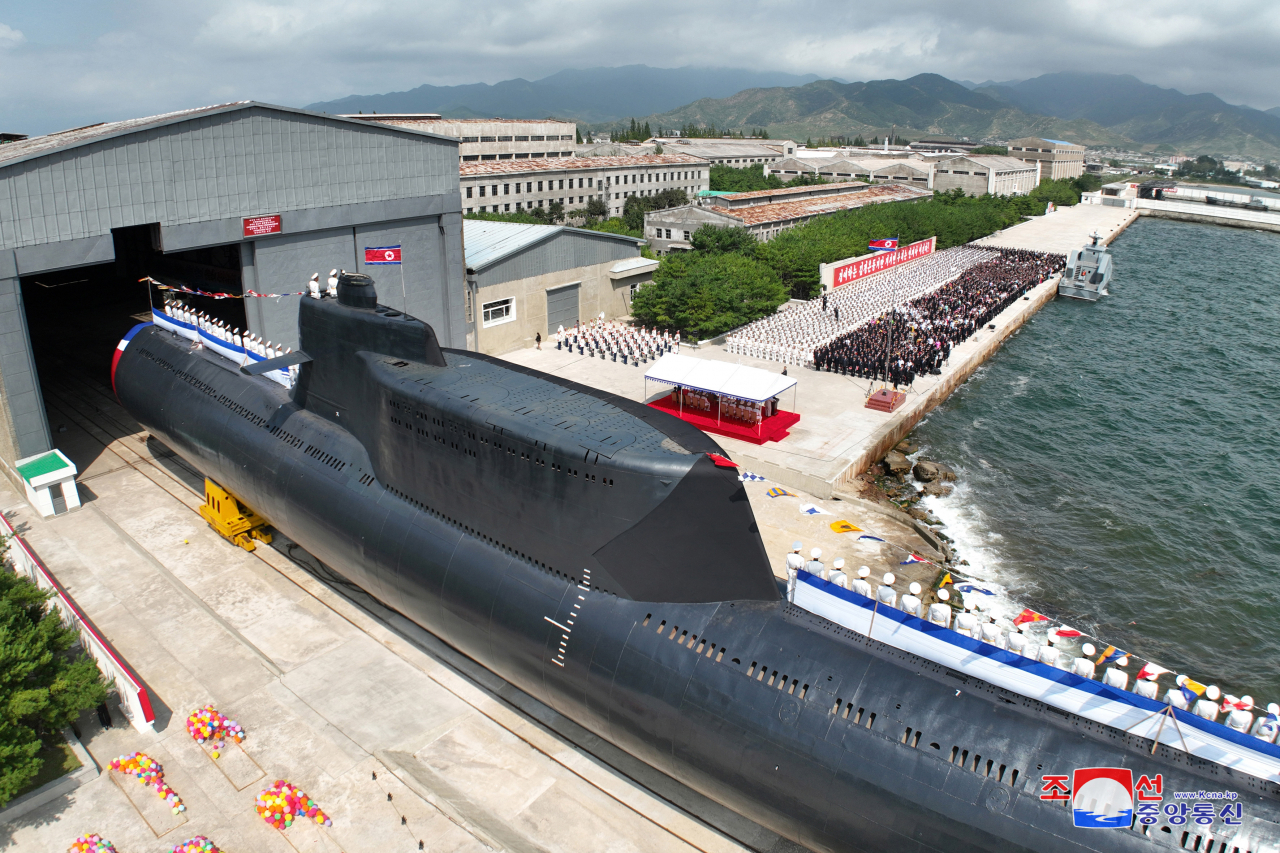
Photos released by North Korean state media reveal that the submarine is equipped with at least 10 vertical launch tubes for submarine-launched ballistic missiles, or SLBMs, positioned on the rear section of its conning tower.
Experts suggest that among these launch tubes, the four larger ones identified in the photos are designed for launching Pukguksong-3/4/5-class SLBMs, while the remaining six smaller tubes at the rear are intended for smaller SLBMs, potentially even smaller than the Pukguksong-3 class SLBM, such as the modified version of the KN-23 short-range ballistic missile.
"It seems a deliberate decision was made to opt for six smaller missile launch tubes instead of the initial design featuring eight larger missile launch tubes, likely with the aim of increasing the number of missiles that can be launched simultaneously," said Ryu Seong-yeop, an intelligence analyst at the Korea Research Institute for Military Affairs.
"Furthermore, there is a possibility of utilizing torpedo tubes for launching submarine-launched cruise missiles."
Ryu said North Korea has shown its intent to "retrofit and upgrade its current fleet of older submarines to function as platforms for short-range SLBMs given limitations in procuring a significant number of new submarines."
"Therefore, enhancing the performance of these existing submarines could present a substantial and pragmatic threat," Ryu said, adding it would allow for the augmentation of their naval capabilities without the necessity of constructing entirely new submarines.
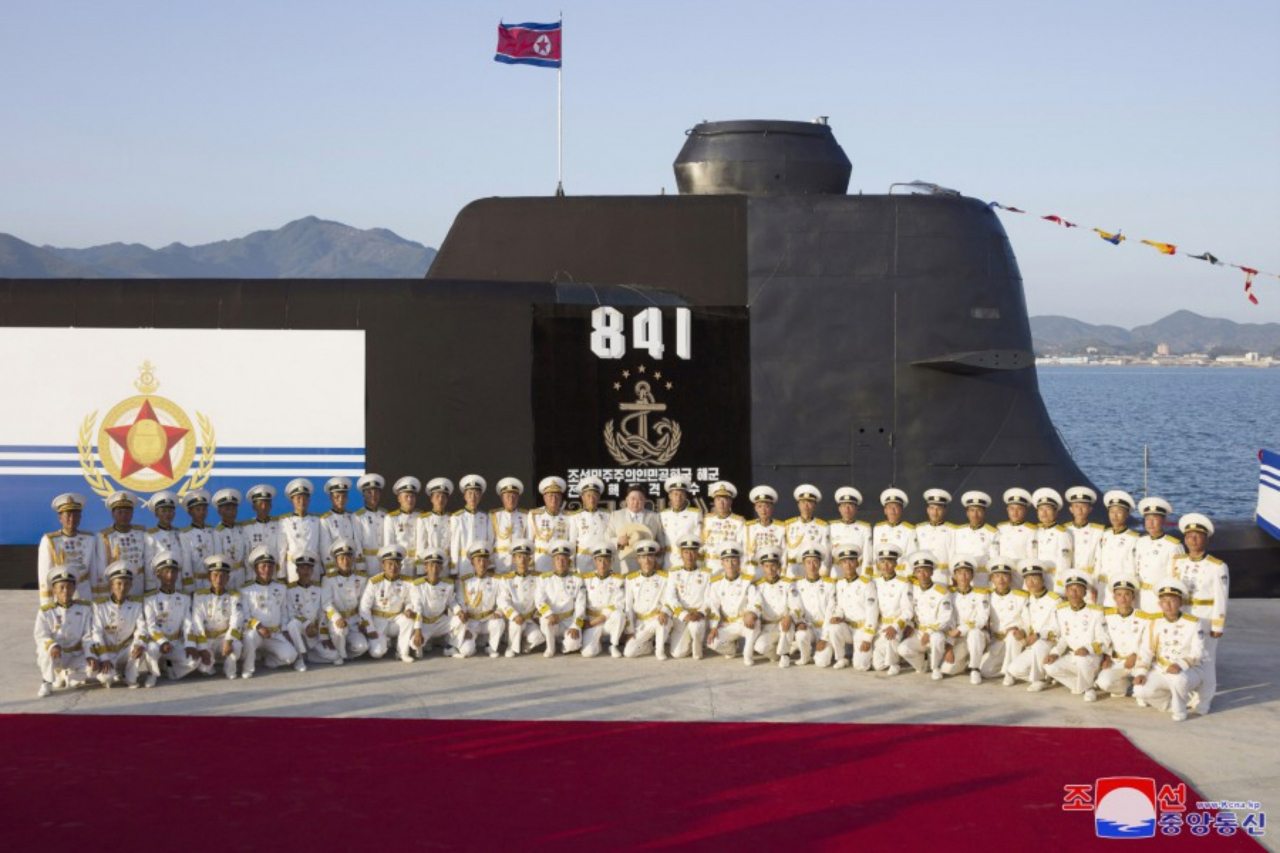
South Korea's JCS on Friday said that its analysis of the submarine's exterior suggested that North Korea has converted an existing 2,000-ton Romeo-class submarine into a ballistic missile submarine. North Korea seems to have expanded certain exterior aspects and dimensions of the submarine to accommodate missiles.
The submarine was first disclosed by North Korean media in July 2019 when Kim Jong-un inspected the construction site. However, photos released by North Korean state media on Friday revealed that North Korea had significantly expanded the missile deck, situated at the rear part of the submarine's conning tower, in comparison to the initial disclosure.
"But it is our assessment that the submarine does not appear to be capable of normal operation," a senior JCS official said on condition of anonymity, without providing further details, during a closed-door briefing.
The South Korean military also noticed signs of North Korean state media either "deceiving or exaggerating" the submarine's capabilities," the official added.
South Korean military evaluations indicate that it's unlikely the submarine possesses the capability for submerged silent operation, a crucial function for submarines, another anonymous senior official confirmed to The Korea Herald.
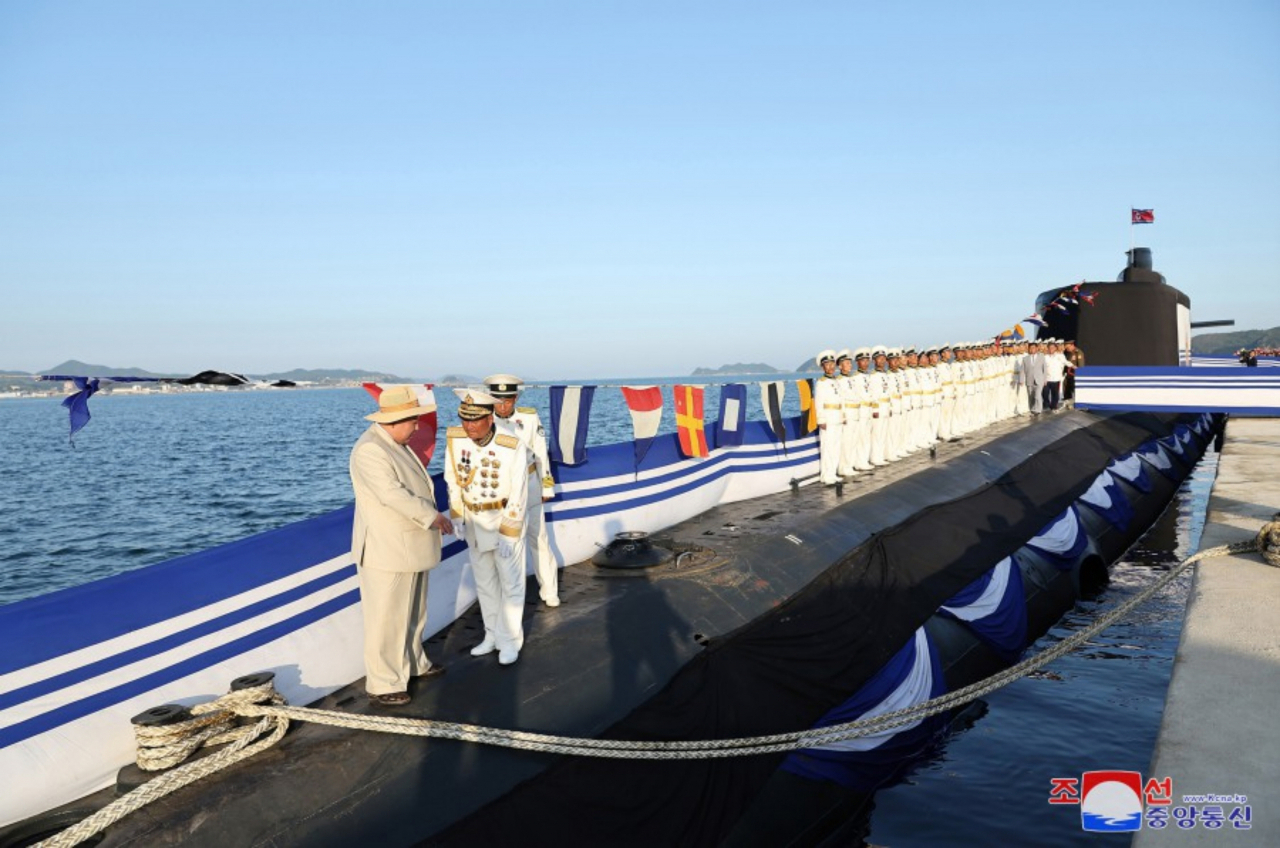
Experts also hold the opinion that the overly spacious missile compartments could hinder the submarine's normal operation.
"The design of simply placing the launch tubes next to the conning tower raises questions about whether the submarine can withstand the launch pressures while still ensuring its vital ability to operate quietly underwater," said Cha Du-hyeogn, a principal fellow at the Asan Institute for Policy Studies.
However, experts pointed out that the more significant concern lies in the security implications of Kim Jong-un's commitment to accelerate the Navy's nuclear expansion, especially in light of evidence of a tightening military alignment between North Korea and Russia.
Cha also highlighted Kim's commitment to the development of nuclear-powered submarines in his speech, given that the primary focus of a potential meeting between Kim and Russian President Vladimir Putin is largely expected to center on North Korea's proposal to provide military equipment for the war in Ukraine, with Russia potentially reciprocating by offering advanced technology, including nuclear-powered submarines.
The United States has disclosed the possibility of a meeting between Kim and Russian President Vladimir Putin on the sidelines of the Eastern Economic Forum, scheduled from Sept. 10 to 13 in the Russian port city of Vladivostok.
"It also suggests that one of the technologies North Korea seeks to acquire through its cooperation with Russia includes nuclear-powered submarines," Cha said.
Yang Uk, a research fellow in national security at the Asan Institute for Policy Studies, said Kim's recent consecutive public activities related to the Navy may be intended to showcase that North Korea has modern naval capabilities that can participate in combined naval exercises recently proposed by Russia.
South Korea's intelligence agency on Monday revealed that Russia has officially proposed conducting combined naval exercises involving North Korea, China and Russia during Russian Defense Minister Sergei Shoigu's visit to Pyongyang in late July. Additionally, Shoigu informed Russian media on Monday that Moscow is currently in discussions regarding combined military exercises with North Korea.
Hong Min, a senior research fellow at the state-funded Korea Institute for National Unification, also pointed out that the disclosure of the submarine aimed to "demonstrate its response capabilities to combined exercise among South Korea, the United States, and Japan."
The psychological pressure resulting from the strengthening of trilateral security cooperation also acted as a catalyst, Hong said. In his speech, Kim emphasized that the swift advancement of naval capabilities has risen to become a foremost national defense priority, given the "enemies' recent attempts of invasion and the evolving nature of military actions."



















![[Today’s K-pop] Treasure to publish magazine for debut anniversary](http://res.heraldm.com/phpwas/restmb_idxmake.php?idx=642&simg=/content/image/2024/07/26/20240726050551_0.jpg&u=)